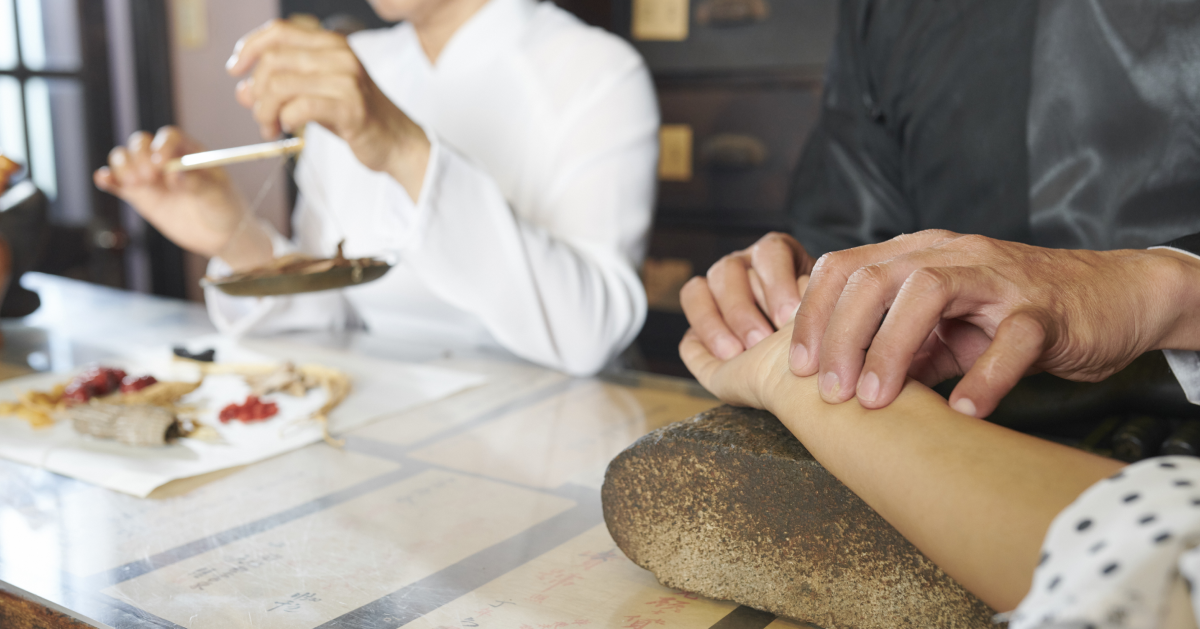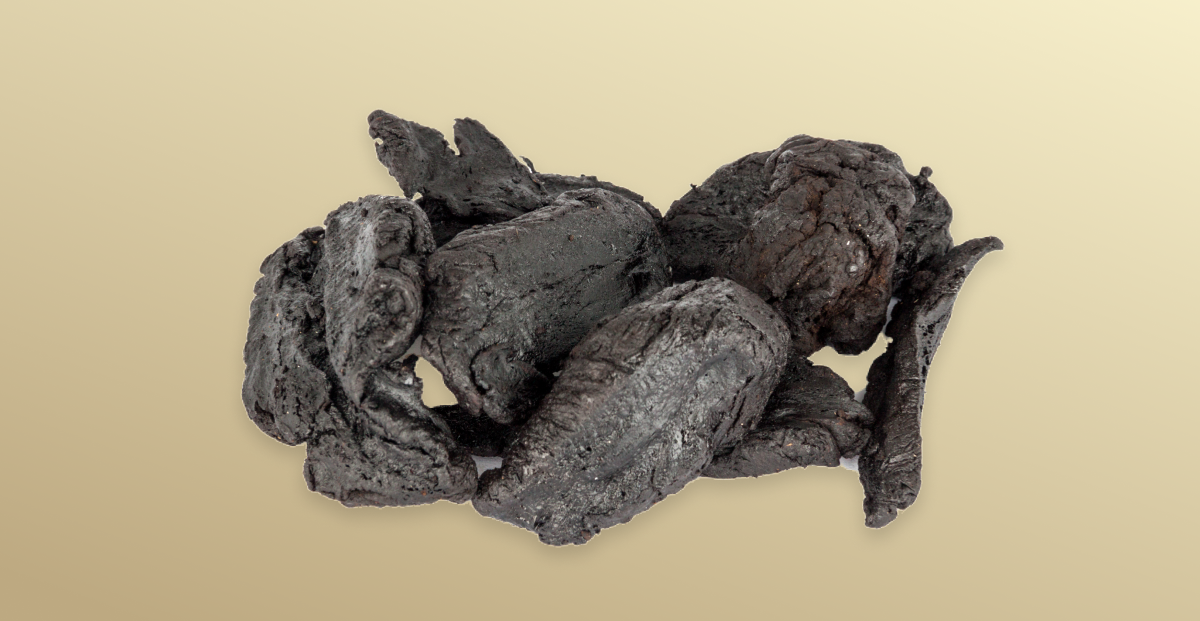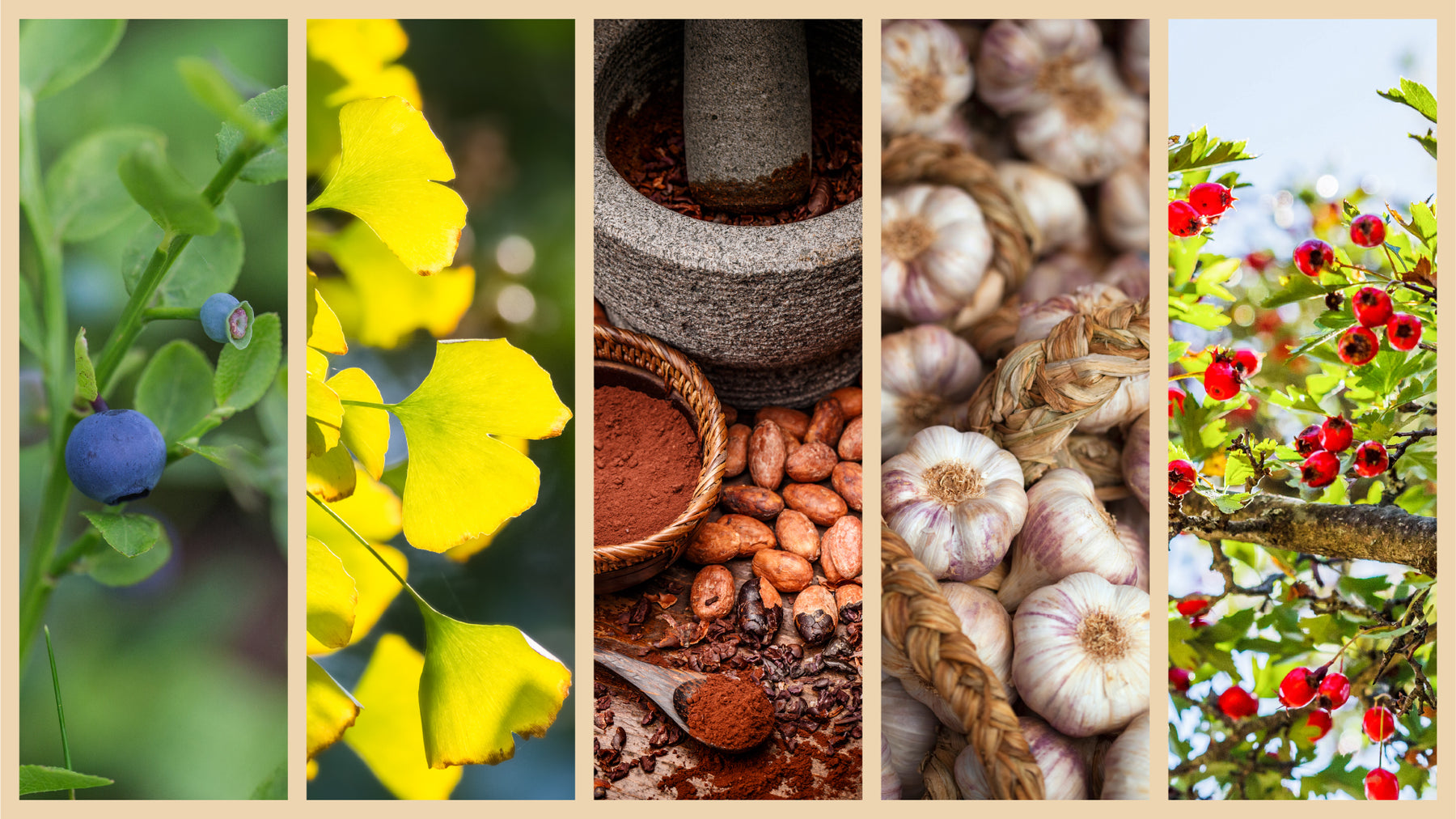
Pain is a universal problem that affects people of all ages and backgrounds and is a growing challenge in the healthcare industry. Many chronic pain management drugs, while effective in reducing pain, can also have detrimental effects on the body if not properly monitored. For example, nonsteroidal anti-inflammatory drugs (NSAIDs), may cause side effects like gastrointestinal bleeding and renal failure. [1]
The search for safe and effective pain management options has led many to explore alternative therapies, such as Traditional Chinese Medicine (TCM). TCM, which has been used for over 2,500 years, offers a holistic approach to pain management that addresses not just the symptoms, but also the underlying causes. This article will delve into the effectiveness of TCM in managing pain, exploring Traditional Chinese herbal medicine, and current research on its effectiveness in treating various types of pain.
How Pain Management in Traditional Chinese Medicine (TCM) Works

Traditional Chinese Medicine is built on two fundamental principles: Yin & Yang and Qi.
1. Yin and Yang
In Traditional Chinese Medicine (TCM), the concept of Yin and Yang is a fundamental principle that describes the balance and relationship between opposing forces in the natural world. These opposing forces are not seen as good or bad, but rather as complementary, interconnected, and necessary for maintaining balance and harmony.
Yin is associated with the qualities of darkness, cold, femininity, and stillness. It is said to represent the passive, absorbing, and contracting aspects of nature. The lungs, liver, heart, spleen, and kidneys are associated with Yin.
Yang is associated with the qualities of light, heat, masculinity, and movement. It is said to represent the active, expansive, and stimulating aspects of nature. The gallbladder, small intestine, large intestine, stomach, and bladder are associated with Yang.
In TCM, health is seen as the balance between Yin and Yang. When this balance is disrupted, it can lead to a variety of physical and emotional symptoms.
2. Qi
Qi is the vital energy or life force that flows through the body. Qi is thought to flow through the body along pathways known as meridians. There are said to be around 14 major meridians in the body, each of which is associated with a particular organ or group of organs. According to TCM, when Qi is flowing freely through the meridians, it helps to nourish and balance the organs and other body systems, and promote overall health.
According to TCM, when Qi is flowing freely through the body, it helps to nourish and balance the body's systems and maintain overall health. However, when the flow of Qi is blocked or unbalanced, it can lead to a variety of health problems, including pain.
We can summarize this into a single statement: If there is free Qi flow, there is no pain. If there is no free Qi flow, there is pain.
Causes of Pain in Traditional Chinese Medicine (TCM)

The causes of pain in Traditional Chinese Medicine are typically divided into two main categories: external and internal causes.
1. External causes
External causes of pain are associated with the environment or external factors, such as weather, diet, and lifestyle. Wind, cold, and dampness are considered to be external pathogenic factors that can invade the body and cause pain, stiffness, and restricted movement. If you experience joint pain during cold, damp weather, this is considered an external cause. Similarly, if you experience pain after eating certain foods, this is also considered an external cause.
2. Internal Causes
Internal causes of pain are associated with imbalances or dysfunction in the body's internal systems, such as the organs and meridians. This can be due to factors such as stress, poor diet, lack of exercise, or a chronic medical condition. As mentioned above, the stagnation of Qi is one of the factors that cause pain in the body.
When Qi is flowing freely and nourishing the body's systems, health is maintained. When Qi is blocked or stagnates, it can cause pain, discomfort, and pain. Additionally, if there is a deficiency of Qi or Blood in the body, this can also lead to pain.
In order to alleviate pain, TCM practitioners may use a variety of techniques to unblock and balance the flow of Qi in the body, such as acupuncture, herbal medicine, dietary therapy, and exercise.
Advantages of Traditional Chinese Medicine (TCM) in Pain Management

Traditional Chinese Medicine (TCM) is considered beneficial in managing pain, especially for people who want a natural, healthy pain management method with minimal side effects.
One potential benefit of using TCM for pain management is that it takes a holistic approach to treat pain. This means TCM practitioners focus on identifying and treating the underlying cause of pain, rather than just treating the symptoms. By treating the root cause of the pain, TCM can help to alleviate pain, improve overall health, and promote healing.
TCM also typically relies on natural, non-invasive treatments such as acupuncture, herbal medicine, dietary therapy, and exercise. This can be beneficial for people who are looking for alternative pain management options or to avoid the side effects of prescription drugs.
A lot of prescription drugs and over-the-counter pain relievers have long-term side effects, including dependence. Take Ibuprofen, for instance. It has the potential to cause harmful side effects like diarrhea, nausea, fever, excessive fatigue, and painful urination, among others.* [2]
Another benefit of using TCM is that it can be useful in managing chronic pain, pain that is difficult to treat with conventional medicine, and that may have no clear diagnosis. TCM also can be effective for pain that is caused by an internal imbalance or dysfunction in the body, such as stress-related pain or digestive discomforts.
It's important to notice, however, that TCM should not be used as a substitute for conventional medical care in serious or life-threatening conditions. It should be seen as complementary to Western medicine. [3]
The research studies, though inconclusive, that have been done in this area show a positive effect of using TCM as an alternative pain management method. In a 2012 study, researchers reported that TCM helped with pain management among NSAID users which resulted in a short-term reduction in NSAID use over the period that the participants used TCM as a pain management method.* [4]
Prescription drugs, on the other hand, are often effective in relieving pain quickly. However, long-term use can lead to dependence, addiction, tolerance, and severe side effects. They are typically used for treating specific, diagnosed conditions and may be prescribed for short or long-term use.
When choosing between TCM and prescription drugs for pain management, it's important to consider your individual needs and preferences, as well as to consult a qualified medical professional to make an informed decision.
Top 10 TCM Herbs For Pain Management

Corydalis root, also known as Yan Hu Suo in Chinese, is a Traditional Chinese herbal medicine that has been used for centuries to manage pain. It is a perennial herb native to China and other parts of Asia.
Corydalis root contains a number of active compounds, including alkaloids, which are believed to have pain and inflammatory response supporting properties.* It is traditionally used in TCM to help alleviate pain and discomfort, particularly pain related to the menstrual cycle, headaches, and joint pain.* In a 2014 study, researchers reported that corydalis contains a compound called dehydrocorybulbine (DHCB) that could be useful in helping manage inflammatory and injury-induced neuropathic pains in rodents.* [5]
2. Frankincense Resin (Ru Xiang)
Frankincense resin, also known as Ru Xiang in Chinese, is an ancient resin obtained from the Boswellia tree. In Traditional Chinese Medicine (TCM), it is used as a warming herb to support the natural pain process, inflammation, and support blood circulation.* It is commonly used in TCM in the form of resin powder, incense, oil, or ointment.
Frankincense contains a variety of unique compounds, including boswellic acid, which has been found to help with a healthy inflammation response, free radical scavenging, and natural pain-relieving processes.* These unique acidic compounds are thought to play a role in the resin's traditional medicinal uses.
3. Safflower Flower (Hong Hua)
Safflower flower, also known as Hong Hua in Chinese, is the dried flower of the safflower plant. It has been used in Traditional Chinese Medicine (TCM) for centuries to help with circulation, ease menstruation discomfort, and relieve symptoms of pain.* The flower of the safflower plant is considered a "blood invigorating" herb in TCM, which means it is used to help circulation and nourish the blood.
Safflower flowers contain a variety of special compounds, including carotenoids, flavonoids and volatile oils, that have been found to have inflammation supporting properties, antioxidant, and be nutrition for the natural pain-relieving process.* Safflower flower is traditionally used in TCM in the form of a decoction or powder. You can also use safflower oil when cooking, and it is actually considered a healthier alternative to olive oil. According to researchers, adding a little safflower oil to your daily routine can help support blood and heart health.* [6]
4.Turmeric (Jiang Huang)
Turmeric, also known as Jiang Huang in Chinese, is a spice and medicinal herb commonly used in Ayurvedic and Traditional Chinese Medicine. The marker ingredient in turmeric is a compound called curcumin, which has been found to have a wide range of potential health benefits, including nutrition for a healthy pain management system.* [7]
Turmeric is used in a variety of conditions, such as indigestion, wounds, and sprains. In TCM, it is considered a warming and pungent herb that promotes blood circulation, healthy inflammation responses, and the natural pain alleviation process.* You can consume turmeric as a powder or capsule, or in combination with other foods as a spice.
5. Angelica Dahurica *
Angelica Dahurica, also known as Bai Zhi in Chinese, is a perennial herb that grows in northeastern Asia and has been used in Traditional Chinese Medicine (TCM) for centuries for headaches, toothaches, body aches, and joint discomforts.* [8]
The root of the plant is used medicinally and contains a number of dietary compounds, including essential oils and various types of lactones, which have been found to have helped with healthy inflammation responses, antioxidant, and natural pain-supporting properties.* Angelica Dahurica is normally consumed in the form of decoction, powder, capsules or pills.
6. Sichuan Lovage Root *
Sichuan Lovage Root, also known as Ligusticum chuanxiong, is a perennial Chinese herb that is normally used to support a variety of ailments, including headaches, menstrual cramps, and acute pain caused by injuries or trauma.*
One of the main nutritional compounds in Sichuan Lovage Root is a compound called ligustrazine, which is believed to have inflammation and pain-supporting properties. Studies have shown that ligustrazine can help to support natural inflammation response and help with the natural alleviation of pain.* Some studies have also suggested that the nutrition may be beneficial with certain types of headaches, such as migraines.* [9]
7. Feverfew (Xiao Bai Ju)*
Feverfew, also known as Xiao Bai Ju, is a perennial herb that is native to Europe and Asia. It is traditionally used to support a variety of ailments, including fever, headaches, migraines, toothaches, stomach concerns, joint discomforts, and menstrual cramps.* [10]
A nutritional compound believed to be responsible for its pain-supporting properties is called parthenolide, which is found in the leaves of the plant. Limited studies have shown that parthenolide can help with the natural inflammation response and help constrict blood vessels, which may help with headaches.* [11]
Feverfew also contains other nutrients like flavonoid glycosides and pinenes, which support the body's normal management of inflammation and muscle strain responses.* [10] Research suggests that taking feverfew supplements or applying a feverfew cream to the temples can help with the frequency, severity, and duration of migraines.* [12]
8. Cinnamon (Rou Gui)*
Cinnamon, also known as Rou Gui in Chinese, is a spice that is made from the bark of trees in the Cinnamomum family. Cinnamon is normally used as a natural remedy for headaches and menstrual cramps. It is also believed to have healthy inflammatory supporting properties, which may help with pains caused by conditions such as overuse joint and back pain.* [13]
Cinnamon also contains a compound called cinnamaldehyde, which supports healthy inflammation and pain responses in the body.* [14] Additionally, cinnamon also contains high levels of antioxidants which help to reduce the activity of free radicals in the body that can contribute to bodily discomforts.*
9. Kudzu Root (Ge Gen)*
Kudzu root, also known as Ge Gen in Chinese, is a perennial vine native to China, Japan, and Southeast Asia. One of the main nutrients in kudzu root is a compound called puerarin, which is believed to have healthy inflammation response supporting and natural pain processing properties.* Limited studies have shown that puerarin can help with normal inflammation and support pain processing, particularly when it is used in combination with other herbs or supplements.* [15] Kudzu root is typically prepared as a decoction by boiling the root in water, although it can also be taken in supplement form.
10. Licorice Root (Gan Cao)*
Licorice root, also known as Gan Cao in Chinese, is a popular herb native to Europe, Asia, and parts of the Middle East. Licorice root contains marker compounds called glycyrrhizin and glycyrrhetinic acid, which are believed to support joint health and the body’s natural pain-processing system.* Limited studies have shown that these compounds can help to support inflammation, pain, and other upper respiratory concerns.* [16]
The Best TCM Products For Pain Management
Conclusion
Though limited and inconclusive research has been conducted in this area, it is clear that Traditional Chinese Medicine may be effective in supporting pain management. It is important to note that TCM is not a replacement for conventional medicine but can be used as a complementary healing method with the guidance of a qualified healthcare professional or TCM practitioner.
* These statements have not been evaluated by the Food and Drug Administration. This product is not intended to diagnose, treat, cure, or prevent any disease.
Appendix:
- https://pubmed.ncbi.nlm.nih.gov/15767833/
- https://medlineplus.gov/druginfo/meds/a682159.html
- https://pubmed.ncbi.nlm.nih.gov/32054304/
- https://www.ncbi.nlm.nih.gov/pmc/articles/PMC3442756/
- https://www.ncbi.nlm.nih.gov/pmc/articles/PMC6399007/
- https://www.sciencedaily.com/releases/2011/03/110321134629.htm
- https://www.ncbi.nlm.nih.gov/pmc/articles/PMC3633300/
- https://www.ncbi.nlm.nih.gov/pmc/articles/PMC4628382/
- https://www.sciencedirect.com/topics/biochemistry-genetics-and-molecular-biology/ligusticum-chuanxiong
- https://www.ncbi.nlm.nih.gov/pmc/articles/PMC3210009/#:~:text=Feverfew%20(Tanacetum%20parthenium%20L.),menstruation%20and%20labor%20during%20childbirth.
- https://pubmed.ncbi.nlm.nih.gov/11514225/
- https://pubmed.ncbi.nlm.nih.gov/25892430/
- https://pubmed.ncbi.nlm.nih.gov/25629927/
- https://www.sciencedirect.com/science/article/pii/S1021949817300819#:~:text=Cinnamaldehyde%20is%20a%20general%20constituent,and%20TNF%2D%CE%B1%20by%20J774A.
- https://www.sciencedirect.com/science/article/pii/S0753332220300378
- https://www.ncbi.nlm.nih.gov/pmc/articles/PMC7012004/














